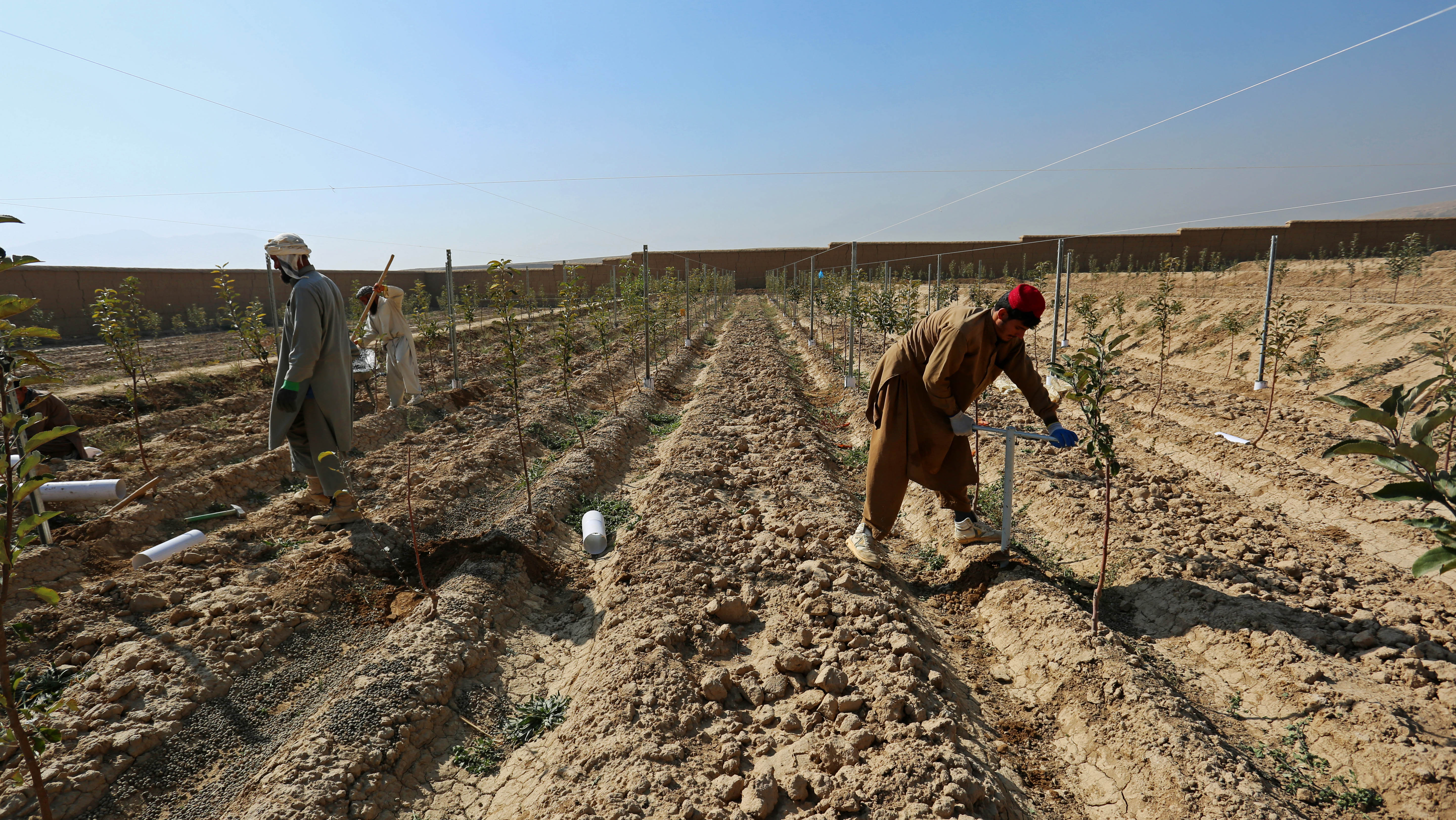PAGHMAN DISTRICT, Kabul Province – The pipe gurgles with cool fresh water on this warm sunny day, while the solar water pump hums in the background. A farmer is singing softly as he waters the newly planted trees in his apple orchard. Two laborers laugh and joke as they dig to soften the earth around the trees.
Farmer Abdul Azim, 27, is able to irrigate his orchard in Zarshakh village, thanks to the recently installed solar water pump. Zarshakh, home to nearly 1,000 households, is one of the most water deficient villages in Paghman district in eastern Kabul Province. While residents derive most of their income from horticulture, they were hardly ever able to enjoy fresh farm produce themselves. Some families like Abdul Azim’s maintained small farms mostly limited to subsistence agriculture.
In March 2016, the National Horticulture and Livestock Project (NHLP) dug a water well and installed the solar water pump for Azim. The project was completed in a short period and by June 2016, the water pump was up and running. The total cost was around 670,000 afghanis (about $10,000), of which NHLP covered 75 percent while the rest was paid by Azim.
“We used to spend 300,000 afghanis (about $5,500) in any given year to buy fuel for generators to power pumps to get water for our farmland,” Azim says. “With the installation of the solar water pump, I saved all that money and yet, for the first time in my village, I had enough water for irrigation.”
The installation of the solar water pump has helped Azim expand his farm from 1.4 to 2.4 hectares. “Before the solar pump, most of my farmland lay barren. I did not even have vegetables on my table regularly,” he says. “But in these six months, I not only have vegetables, I have enough to give to my neighbors too.”
In addition to the solar water pump, NHLP also helped Abdul Azim establish two new apple orchards with a total of 888 saplings. He expects to earn more money from this new venture. “NHLP trees grow faster than traditional ones and bear fruit in their second year,” he explains. “Already I have managed to sell one year’s harvest from the trees planted last year. The demand was good and people praised my apples for their color and taste.”


